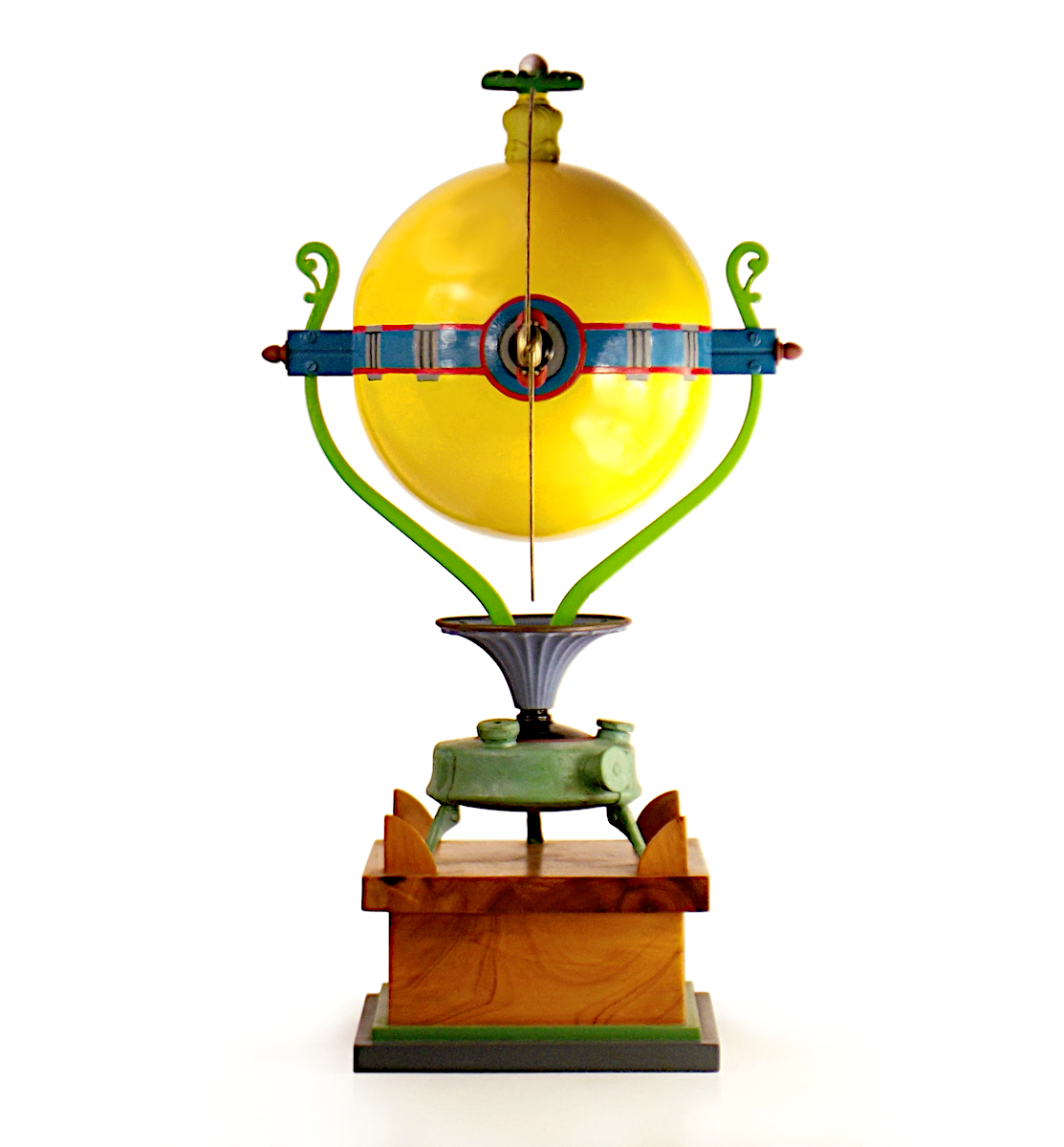nomos: ‘ a musical mode; a custom, law or ordinance, or a pasture’
This sculpture is based on the character Apollo, the god of archery, music, and prophesy. It forms part of the series Powell’s patterns 2, 11, 20, 25, and was constructed from a fishing buoy, outside spring calipers, hand-forged outside calipers, Primus camping stove, pendant light fixture ceiling hook cup, combination square blades, Apsco Vacuhold pencil sharpener, tracing wheel, saltshaker foot, gate valve head, toast rack components, pepper grinder components, washers, wood, and enamel paint. It measures 51,5 x 30 x 35 cm.

Apollo ΝΟMΟΣ is a depiction of the god Apollo as a mentor who turns on their protegé. Apollo’s areas of specialization – archery, music, and prophecy are expressed as a bow, lyre and tripod set on a horned altar. Apollo’s primary function as enforcer of correct and ‘measured’ conduct is alluded to in the use of instruments such as the caliper, ruler, tracing wheel and pencil sharpener.

Apollo ΝΟMΟΣ side view
This work forms part of a series of nine sculptures titled Powell’s Patterns 2, 11, 20, 25 which is a sculptural exploration of four contingents from the list of combatants (The Catalogue of Ships) in Homer’s Iliad. Superficially, the only link between these four catalogue entries are structural similarities first identified by the scholar Barry Powell. The sculptural series explores thematic links between these entries. Within the series, Apollo is paired with the Muses who punished the singer Thamyris for declaring his skills as a musician superior to theirs. While Apollo is not named in the catalogue entry on Nestor’s kingdom, the reference to Thamyris having traveled from the kingdom of Oichalia, ruled by Eurytos, is notable.
In the Odyssey, Odysseus tells of Apollo killing Eurytos of Oichalia for having claimed that he was the better archer.
It is also Apollo who was most disgusted with the excesses of Achilles, who ultimately engineers the death of the great Geek hero. In this sculptural series, Apollo also represents are rare breach of what is known as Monro’s Law – which states that although the Homeric poems complement each other, they will never refer to the same events.

Apollo ΝΟMΟΣ rear view
